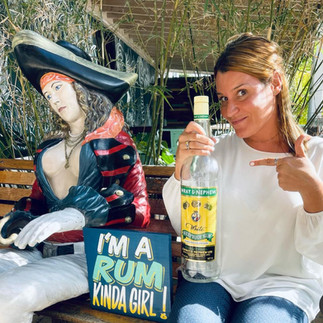Jamaica, known for its stunning beaches, vibrant culture, and reggae music, also harbors a rich history of piracy. From the 17th to the early 18th century, the island served as a central hub for pirates, privateers, and buccaneers. These swashbuckling adventurers left an indelible mark on the history and folklore of Jamaica, transforming the island into a legendary haven for those seeking fortune and freedom on the high seas.

The Golden Age of Piracy
The Golden Age of Piracy, spanning from the late 1600s to the early 1700s, was a time when the Caribbean seas were teeming with pirate ships. The strategic location of Jamaica, particularly the bustling port of Port Royal, made it an ideal base for pirates. The island's proximity to major shipping routes and its natural harbors provided the perfect setting for pirate activities.
Port Royal: The Pirate Capital
Port Royal, often referred to as the "wickedest city on Earth," was the epicenter of pirate activity in Jamaica. Established by the Spanish in 1494 and captured by the English in 1655, Port Royal quickly became a thriving port and the primary base for privateers and pirates.
Privateering and Buccaneering
Privateering was a form of legalized piracy, where private ships were authorized by governments to attack enemy vessels during wartime. The English Crown issued letters of marque to privateers, allowing them to plunder Spanish ships and settlements. Port Royal became the main stronghold for these privateers, who were essentially pirates with a license to loot.
Buccaneers, on the other hand, were pirates who operated in the Caribbean and targeted Spanish territories. They were known for their daring raids and fierce combat skills. Many buccaneers, including the infamous Henry Morgan, operated out of Port Royal, launching attacks on Spanish colonies and amassing great wealth.
Notorious Pirates of Jamaica
Several infamous pirates and privateers made their mark on Jamaica's history. Their exploits and adventures have become the stuff of legend.
Henry Morgan
Perhaps the most famous pirate associated with Jamaica, Henry Morgan, was a Welsh privateer who became a national hero in England. Morgan's daring raids on Spanish territories, including the sacking of Panama City in 1671, earned him both fame and fortune. Despite his pirate activities, Morgan was knighted by King Charles II and appointed Lieutenant Governor of Jamaica. He spent his later years in Port Royal, overseeing the island's defenses and continuing his involvement in privateering.
Calico Jack Rackham
John "Calico Jack" Rackham was another notorious pirate who roamed the Caribbean waters. Known for his distinctive calico clothing, Rackham is remembered for his partnership with the legendary female pirates Anne Bonny and Mary Read. Rackham's pirate career came to an end in 1720 when he was captured by the British Navy and subsequently hanged in Port Royal.
Blackbeard
Edward Teach, better known as Blackbeard, was one of the most feared pirates of the Golden Age. While Blackbeard is more commonly associated with the Carolinas, he spent considerable time in the Caribbean, including Jamaica. His fearsome appearance, with a long black beard and a reputation for cruelty, made him a legendary figure. Blackbeard's flagship, Queen Anne's Revenge, was a symbol of terror on the high seas.
The Decline of Piracy
The golden age of piracy in Jamaica began to wane in the early 18th century. Several factors contributed to the decline of piracy in the region.
Natural Disasters
In 1692, a devastating earthquake struck Port Royal, causing much of the city to sink into the sea. The earthquake, followed by a tsunami, destroyed the majority of the town, killing thousands and effectively ending Port Royal's reign as the pirate capital. The survivors relocated to Kingston, which became the new commercial hub of Jamaica.
Increased Naval Presence
The British Navy increased its presence in the Caribbean to combat piracy. The establishment of naval bases and the deployment of warships made it increasingly difficult for pirates to operate freely. The British government also intensified efforts to capture and execute pirates, making piracy a much riskier endeavor.
Changes in Colonial Policy
As European powers solidified their control over the Caribbean, they began to prioritize stability and trade over privateering. The issuance of letters of marque declined, and many former privateers were integrated into colonial society or pursued other ventures.
Legacy of Pirates in Jamaica
Despite the decline of piracy, the legacy of these maritime outlaws lives on in Jamaica. The island's history is deeply intertwined with tales of pirate treasure, daring raids, and notorious figures. Today, Jamaica embraces its pirate heritage as a unique and fascinating aspect of its cultural identity.

Cultural Impact
Pirate lore has become a significant part of Jamaican culture, influencing literature, music, and tourism. The image of the swashbuckling pirate has been romanticized in countless books, movies, and songs, captivating the imagination of people worldwide. Jamaica's pirate history adds a sense of adventure and mystique to the island's rich cultural tapestry.
Tourism and Attractions
Jamaica capitalizes on its pirate past to attract tourists seeking a taste of adventure. Visitors can explore historical sites and learn about the island's pirate heritage through museums, tours, and events. Port Royal, despite its partial submersion, remains a popular destination for history enthusiasts. The town's archaeological sites and museums offer a glimpse into its tumultuous past.
Festivals and Celebrations
Jamaica hosts various festivals and events celebrating its pirate history. These celebrations often feature reenactments of pirate battles, parades, and cultural performances. The annual Port Royal Heritage Week, for example, commemorates the town's history with a week-long series of events, including historical tours, lectures, and festivities.

The history of pirates in Jamaica is a captivating tale of adventure, wealth, and intrigue. From the bustling pirate haven of Port Royal to the daring exploits of infamous pirates like Henry Morgan and Calico Jack Rackham, Jamaica's pirate legacy is rich and enduring. While the golden age of piracy has long since passed, the spirit of these maritime outlaws lives on in the island's culture and history. Today, Jamaica invites visitors to explore its pirate past and immerse themselves in the captivating stories of the swashbuckling adventurers who once roamed its shores.
Come and meet our resident pirates, Captain Henry and rum girl Jezzibel, located near the entrance of Main Street Rose Hall, Montego Bay (across from The Rose Hall Great House). Oh the stories they could tell you! Take and picture with them, post and tag us!
Follow us on Instagram @MainStreetRoseHall and on Tik Tok @main.street.rose.hall

.png)





